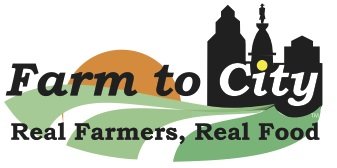September Seasonal Market Guide
Botanically speaking a pome from the tree known as Malus domestica
Apple
Pennsylvania usually ranks fourth in apple production per state, growing between 400 and 500 million pounds of apples per year.
The farmers who come to market grow an incredible variety of apples, usually beginning with the summer rambos in early August; last apples to pick from the trees are usually pink ladies in late October.
A cultivar from the winter squash, or the Cucurbita pepo, family
Spaghetti Squash
Gets its name because, once cooked, the vegetable is scraped and shredded into strands that look like noodles.
It can be used as a substitute for pasta and served with pomodoro or al fredo sauce, pesto, or even in a mac-n-cheese; its earthy sweetness also goes well with shellfish so it pairs nicely with recipes like shrimp scampi and mussels marinara.
Like most edible tree fruits, a member of the Rosaceae family
Pear
Its blossoms are one of the first signs of spring in early April and yet they aren't ready for harvest until the end of summer, one of those local foods that takes the entire growing season to make it to market.
Asian pears can be eaten as soon as you get home from market but the European and American varieties usually take about a week from purchase to ripen; you can actually watch some varieties change color, from green to yellow, as they ripen on your counter or in your fruit bowl.
Most hot and sweet peppers are different varieties of Caspicum annuum
Pepper
Local peppers come in a variety of shapes, colors, and levels of sweetness and spiciness; for sweet varieties we recommend bell peppers and Jimmy Nardellos.
The dark green poblanos have a complex, smoky flavor that's great in Tex-Mex recipes; the little shisito peppers are fun to roast in a pan and serve with lemon and salt.
For that hot chile flavor, go right for the serrano, the cayenne, or the habanero; and look for the new habanado, the world's first heatless habanero, one of the newest peppers to hit the local scene.
Classified as a berry that grows from the woody vines of the Vitis genus
Grape
It is the most valued fruit crop in the country, feeding an industry that is worth over $60 billion; Pennsylvania is usually ranked in the top ten grape-producing states but only accounts for a very small percentage of the total U.S. grape population; New Jersey also grows a lot of grapes, usually ranking seventh in wine production.
Their season begins in late August and tends to last until end of September; the local grapes found at our markets are called table grapes as opposed to wine grapes or Thompson seedless grapes, which are grown for the raisin industry.
A member of the Star-Flower genus, in the subfamily Asteroideae
Dahlia
The national flower of Mexico, this radiant and intricate blossom can now be found in all different kinds of patterns and shapes, including the pompom, the ball-dahlia, the water-lily, and the fimbriated.
Dahlias have very little scent so they must rely on their bright colors to attract pollinators.
Illustrations by Jacqueline Quinn

